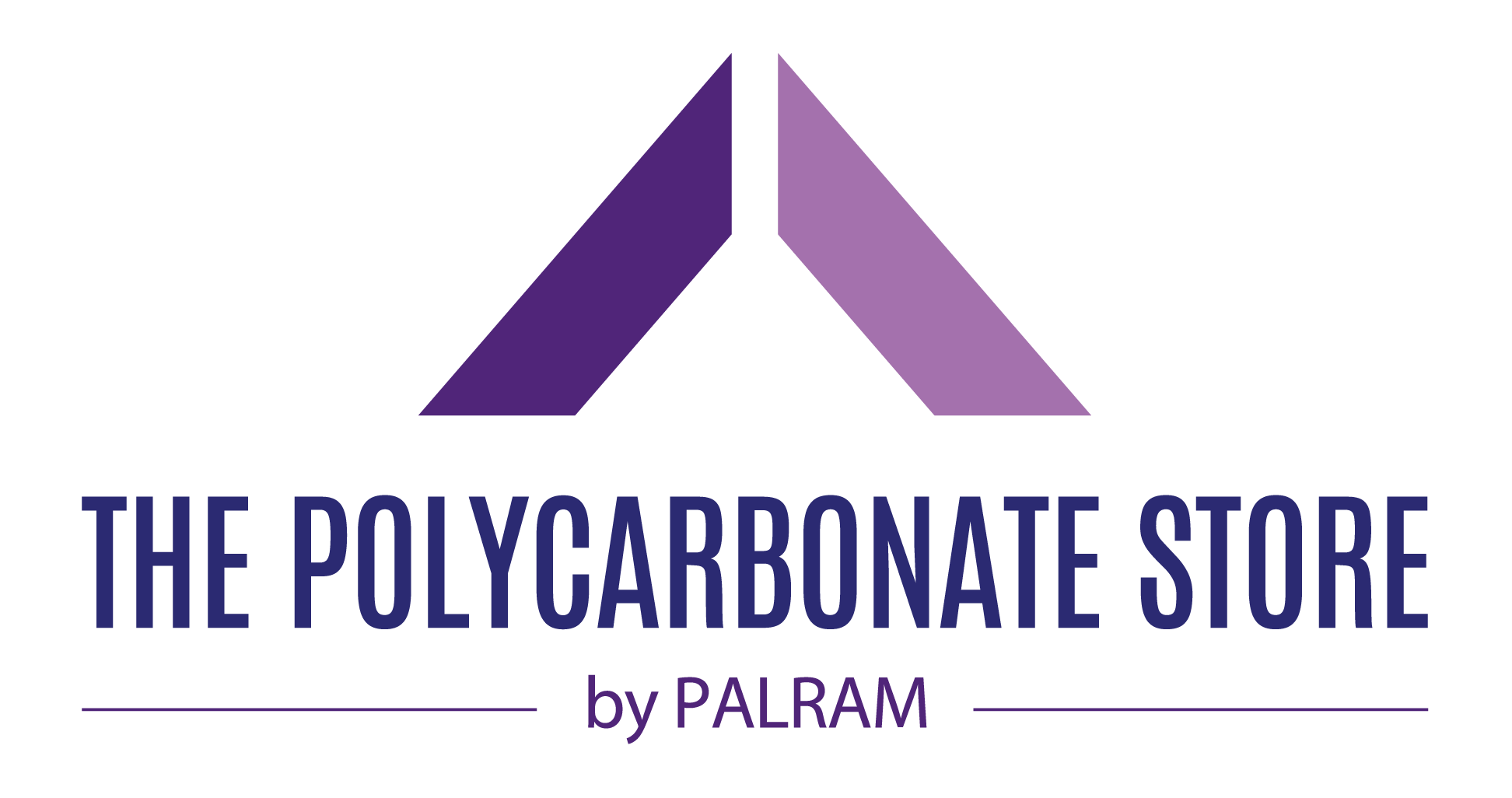Building the Best Polycarbonate Porch Roof
A well-designed porch roof can enhance your home's appearance while offering protection from the elements.
Polycarbonate is an excellent choice for a porch roof due to its durability, versatility, and aesthetic appeal. Unlike glass or traditional roofing materials, polycarbonate is lightweight yet incredibly strong, capable of withstanding harsh weather conditions such as heavy rain, snow, and strong winds. It also features UV resistance, preventing yellowing or degradation over time.
Available in various colours and thicknesses, polycarbonate can be cut to fit your exact space, making it a practical solution for both modern and traditional homes.
Whether you're looking for a sleek, contemporary finish or a classic, diffused look, there are multiple styles to choose from to match your home's aesthetic. Plus, with its insulating properties, polycarbonate helps maintain a comfortable porch environment year-round, reducing excessive heat buildup in summer and retaining warmth in cooler months.
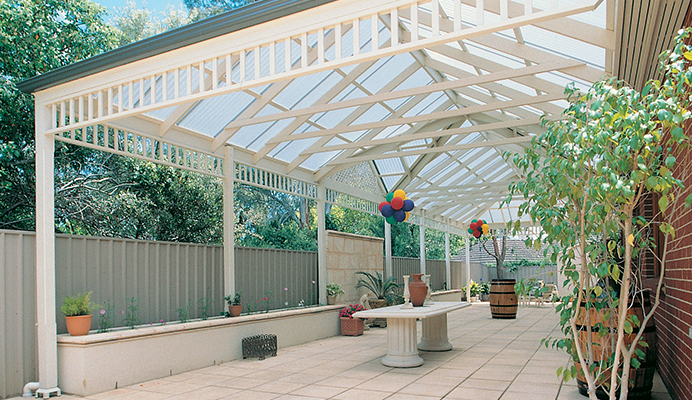

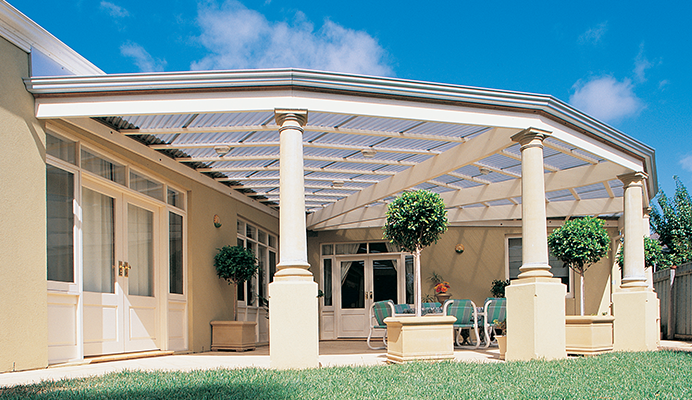

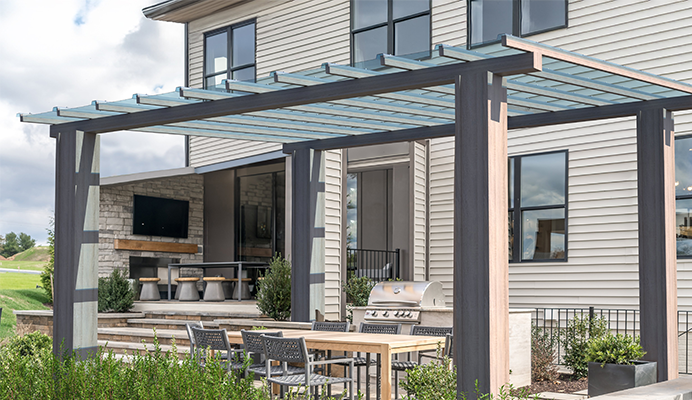

Planning Your Porch Roof
Before choosing a polycarbonate roof, it’s essential to consider the size, shape, and structure that best suits your home. A well-proportioned roof will seamlessly blend with the rest of the property while providing functional coverage.
Common Porch Roof Shapes
- L-Shape: Ideal for wrapping around the corner of a home.
- Square or Rectangle: The most common and straightforward option, providing even coverage and easy installation.
Popular Porch Roof Structures
- Lean-to: A single-sloped roof that attaches to an existing wall, commonly used for porches and extensions.
- Freestanding: A self-supported structure that can be built using timber, aluminium, or steel frames.
Do You Need Planning Permission?
In the UK, most porch roofs fall under permitted development rights, meaning they do not require planning permission. However, there are exceptions:
- If the porch is at the front of the house, particularly in conservation areas or listed buildings.
- If the structure is too large or tall:
- Maximum height of 2.5 metres within 2 metres of a boundary.
- If further from the boundary, the maximum height increases to 3 metres.
- A pitched-roof structure can be up to 4 metres high.
- If the roof covers more than 50% of the land around your house.
- If the porch is built on a veranda, balcony, or raised platform.
It’s always advisable to check with your local council before starting any construction.
Choosing the Right Polycarbonate Roof for Your Porch
The type of polycarbonate sheet you choose will affect the appearance, durability, and performance of your porch roof.
Polycarbonate Roofing Options:
- EZ Glaze: A modern, sleek, glass-like appearance that offers excellent light transmission and UV protection.
- SUNTUF Beehive: Textured for a diffused light effect while maintaining durability.
- SUNLITE Multiwall: A lightweight, energy-efficient option that provides insulation.
- SUNTUF DIY: A robust, easy-to-install choice for DIY projects.
Popular Roof Styles:
- Lean-to: A simple, single-slope design that works well with most homes. Example: EZ Glaze lean-to pergola.
- Apex (Gable): A two-sided pitched roof that complements houses with traditional sloped roofs. Example: SUNPAL multiwall panels for large areas.
- Hipped: A four-sided roof that provides a sturdy and elegant look, ideal for enclosed porches. Example: SUNGLAZE for commercial-style aesthetics.
- Curved: Offers a modern, unique style, often used for contemporary homes. Example: SUNLITE curved roof.
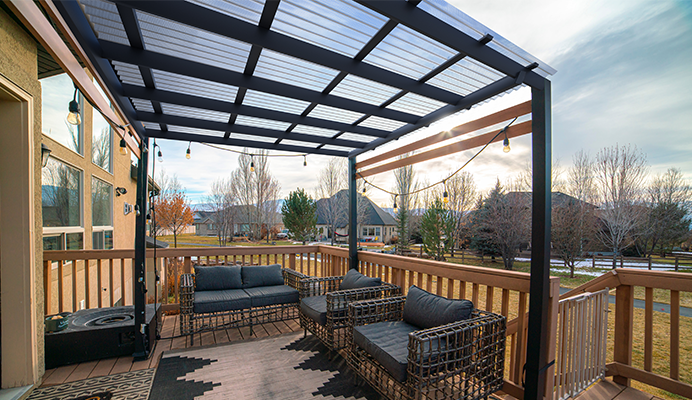

Maximising Natural Light
A well-designed porch roof should allow for comfortable natural lighting. Polycarbonate sheets come in different tints and levels of transparency to control light and heat.
Common Polycarbonate Colours:
- Clear: Maximum light transmission, ideal for brightening shaded areas.
- White Opal: Reduces glare while diffusing soft light, great for hotter locations.
- Bronze: Lowers heat buildup while providing a warm, tinted appearance.
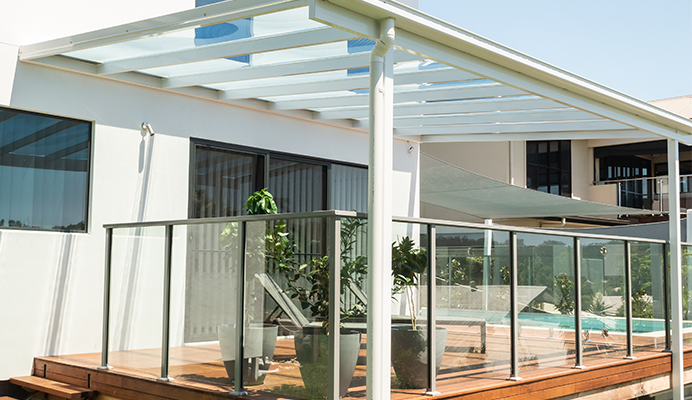

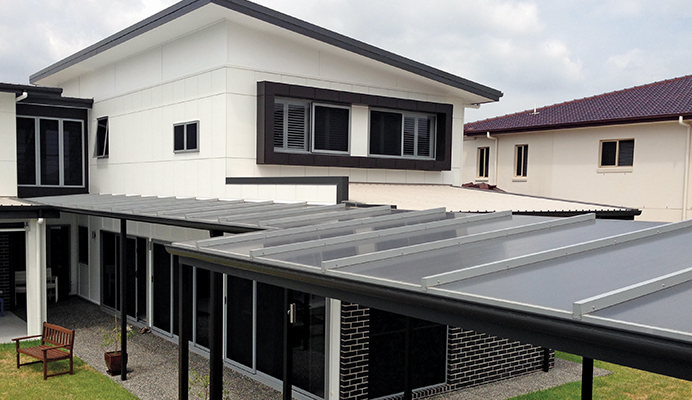

Installation: DIY or Professional?
Installing a polycarbonate porch roof involves two main steps: building the supporting frame and fitting the polycarbonate sheets.
- DIY Installation: Our polycarbonate sheets are lightweight and easy to handle. With our detailed guides and tutorials, confident DIY enthusiasts can install them with the right tools and planning.
- Professional Installation: We recommend hiring a professional installer for a precise, secure, and warranty-compliant installation.
Maintenance Tips
Polycarbonate is low-maintenance, but regular cleaning will extend its lifespan and maintain its appearance.
- Remove leaves and debris to prevent clogging.
- Clean with mild soapy water and a soft cloth—avoid abrasive materials to prevent scratches.
- Follow Palram’s care and maintenance guidelines for best results.


Building a polycarbonate porch roof is a great way to enhance your home’s aesthetic and functional appeal. By carefully selecting the right materials, style, and installation method, you can create a beautiful, durable space to enjoy for years to come. Whether you opt for a DIY installation or hire a professional, a well-planned polycarbonate porch roof is a long-term investment in comfort and style.
Not only does a polycarbonate porch roof provide shelter from the elements, but it also adds value to your home by increasing its curb appeal and usability. With the right choice of polycarbonate, you can control the amount of light and heat that enters your porch, creating a more comfortable and energy-efficient space. Additionally, its low-maintenance nature means you’ll spend less time on upkeep and more time enjoying your outdoor area.
From enhancing outdoor seating areas to providing a protected entryway, polycarbonate roofing offers a versatile solution to suit any home. Whether you're looking for a modern, sleek finish or a classic, functional structure, The Polycarbonate Store has everything you need to bring your vision to life.
Explore our full range of polycarbonate roofing sheets at The Polycarbonate Store and get started on your project today!
